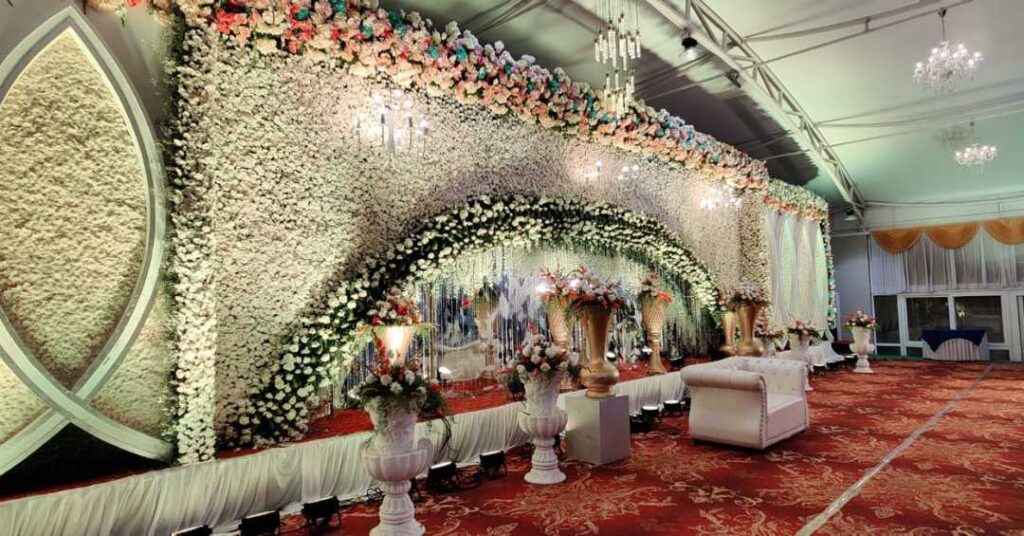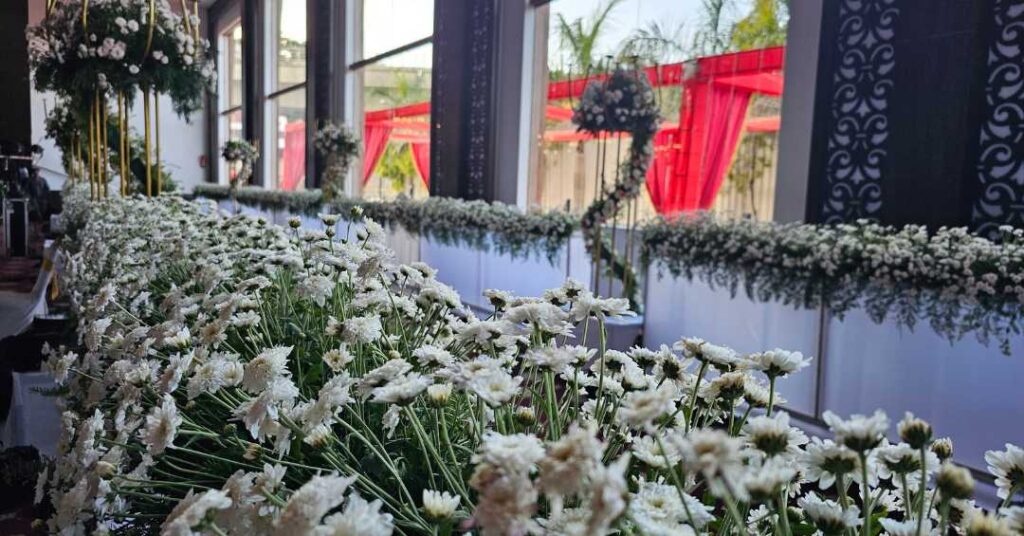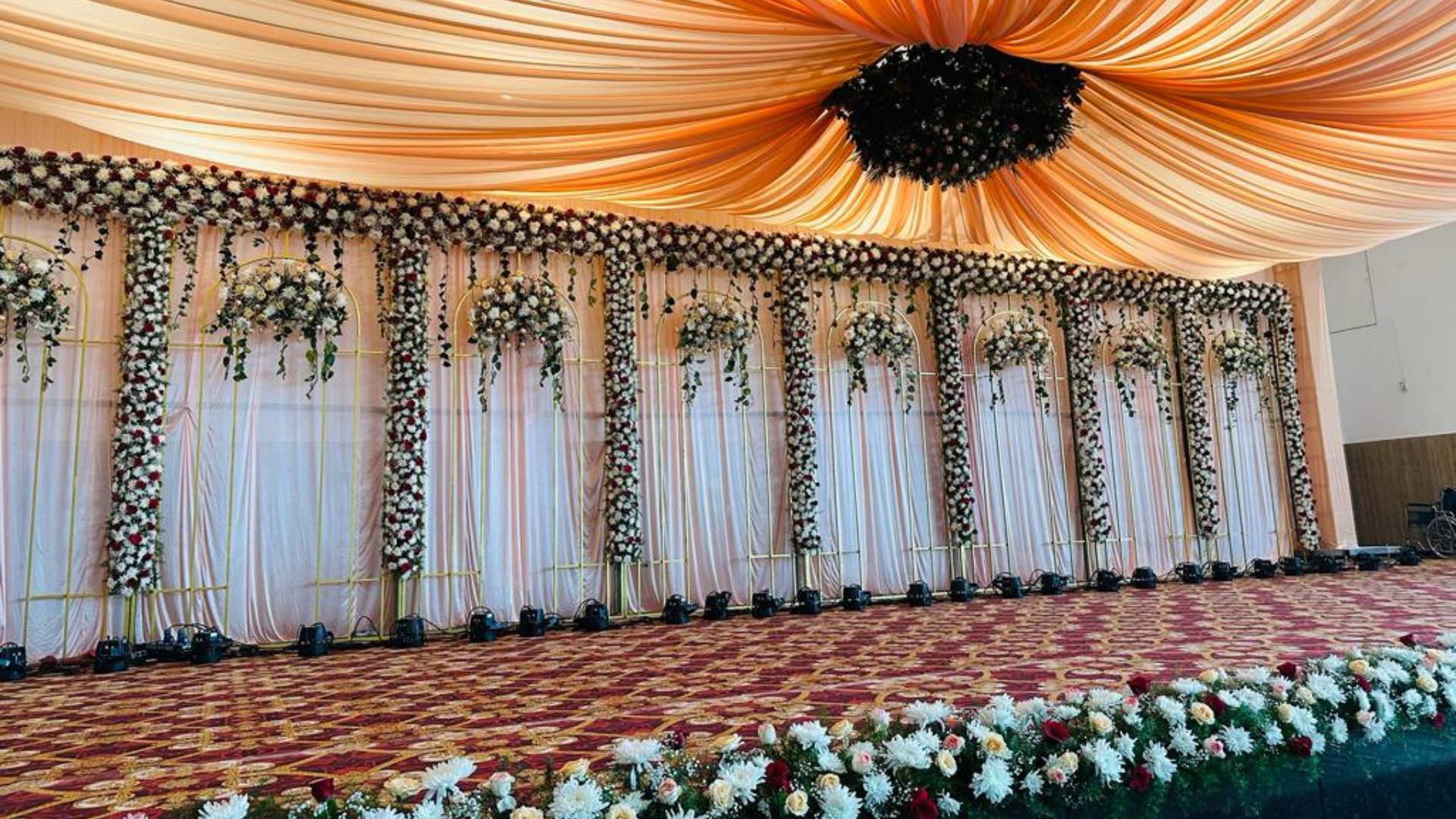Indian weddings are a grand celebration of love, tradition, and vibrant colors. Each wedding event, from pre-wedding ceremonies to the grand reception, holds a unique significance and is often adorned with a specific theme color. Managing these theme colors effectively ensures a cohesive and visually appealing celebration that reflects the couple’s personalities and preferences. Aikyam Weddings helps you in the realm of choosing the theme colours of your wedding according to your choice and taste.
Here are the tips to choose theme colours for different events of Indian Marriages.
1. Pre-Wedding Ceremonies: Setting the Tone
The pre-wedding ceremonies, such as the engagement, sangeet, and mehendi, are often more intimate affairs, allowing for a more personalized approach to color selection. Pastel hues like peach, sky blue, or lavender create a soft and elegant ambiance, while brighter shades like yellow, orange, or teal can infuse energy and vibrancy.
Engagement: A delicate balance of pastel shades like blush pink, ivory, or lilac can create a romantic and sophisticated atmosphere for the engagement ceremony.
Sangeet: A lively and upbeat sangeet can be enhanced by incorporating vibrant colors like turquoise, fuchsia, or coral.
Mehendi: A traditional mehendi ceremony can be adorned with earthy tones like terracotta, mustard yellow, or olive green, reflecting the richness of Indian heritage.
2. The Wedding Ceremony: A Tapestry of Colors
The wedding ceremony, the heart of the celebration, demands a more traditional and regal color palette. Red, the color of auspiciousness and love, is a common choice for the bride’s attire, while the groom can complement her in gold or ivory. For a more modern approach, pastel shades of red, pink, or orange can be incorporated, while deep shades of maroon or burgundy add a touch of elegance.

Mandap Decor: The mandap, the ceremonial canopy under which the bride and groom exchange vows, can be decorated in a combination of red, gold, and green, representing prosperity, joy, and fertility.
Floral Arrangements: Flowers like roses, orchids, and lilies, in shades of red, pink, or white, can enhance the beauty of the mandap and create a romantic ambiance.
3. The Reception: A Celebration in Style
The wedding reception, the grand finale of the festivities, offers an opportunity to showcase the couple’s personal style and preferences. A specific color theme can be chosen to match the venue, the couple’s attire, or the overall mood they wish to create.
Gold and Ivory: A classic combination of gold and ivory exudes elegance and sophistication, perfect for a luxurious reception.
Silver and Blue: A combination of silver and blue creates a modern and contemporary ambiance, suitable for a trendy couple.
Peach and Pink: A delicate blend of peach and pink is ideal for a romantic and feminine reception, while a bolder combination of peach and coral adds a touch of vibrancy.
4. Décor Ideas: Complementing the Colors
The décor plays a crucial role in bringing the chosen theme colors to life. From tablecloths and centerpieces to lighting and stage backdrops, every element should harmonize with the overall color scheme.
Tablecloths and Centerpieces: Tablecloths in the chosen theme color can be complemented by centerpieces featuring flowers, candles, or personalized elements.
Lighting: Lighting can be used to create a specific mood, with warm white lights for a cozy atmosphere and colored lights for a more vibrant ambiance.
Stage Backdrops: The stage backdrop can be transformed into a stunning focal point using drapes, floral arrangements, or projections in the chosen theme colors.

5. Managing Theme Colors Effectively
To ensure a cohesive and well-coordinated color scheme throughout the wedding events, consider these tips:
Communicate with Vendors: Clearly communicate your color preferences to all vendors, including the décor team, florists, and lighting specialists.
Create a Color Palette: Develop a color palette that includes the primary colors, secondary accents, and complementary hues.
Consistency is Key: Maintain consistency in the use of colors across all elements, from invitations and stationery to décor and attire.
Seek Expert Guidance: Consider consulting a wedding planner or stylist who can help you select and manage theme colors effectively.
By carefully managing theme colors, you can transform your Indian wedding into a visually stunning and memorable celebration.

